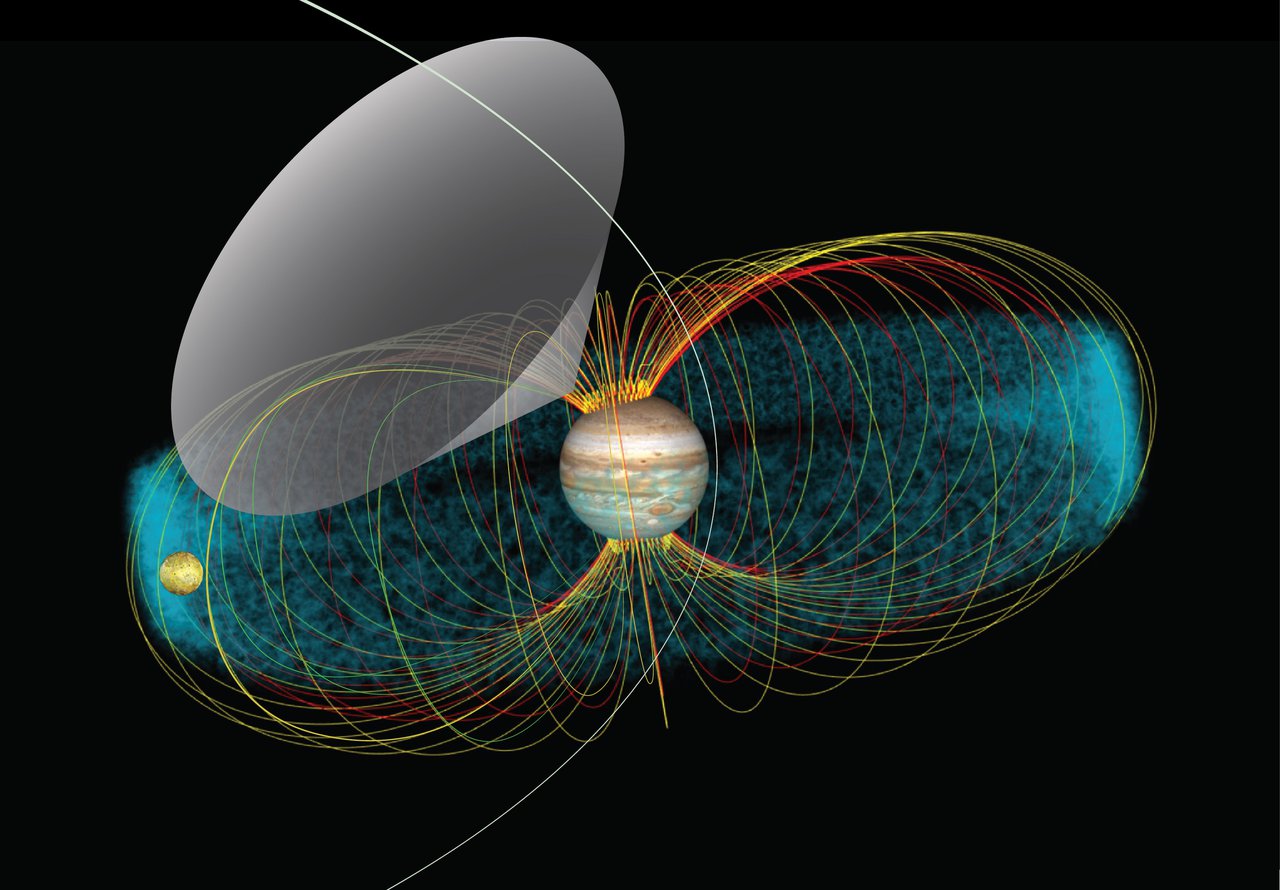
By now, most of our audience likely knows that my favorite moon is Io, the closest in of Jupiter’s four Galilean moons. Io is an incredibly volcanic body, constantly being squeezed by the gravitational forces of both Jupiter and two of the other Galilean moons. The squeezing heats up Io’s interior, which then provides the power to generate multiple volcanic eruptions all over the small moon. Images of lava fountains have been captured by the Galileo, Voyager, and New Horizons spacecraft. Now, NASA’s Juno is at Jupiter, collecting data on the gas giant and its moons, Io included.
Jupiter, of course, is the largest planet in our solar system. As Pamela talked about last week, it is the planet against which we compare exoplanets. We look at it as a standard, despite it being wildly different from every other planet in our solar system. One of the ways that Jupiter is different is its huge magnetic field. That’s the main reason Juno was sent to Jupiter: to gain an understanding of that magnetic field, which stretches from 3.2 million kilometers in the direction of the Sun to more than 965 million kilometers away from the Sun. It’s huge. So big as to be incomprehensible to the human mind. And yet, we can use what we learn about Jupiter and its magnetic field to potentially understand similar planets elsewhere in the galaxy.
But why did I even bring Io up? Well, it turns out that Io’s volcanoes and the gas and particulate matter that erupt from those volcanoes are affected by Jupiter’s magnetic field in a really interesting way. Side note: Io releases one ton of that matter into space every second! So this isn’t a matter of a little effect; it’s a noticeable effect that researchers analyzing Juno’s data have figured out.
Per the press release: Some of this material splits up into electrically charged ions and electrons and is rapidly captured by Jupiter’s magnetic field. As Jupiter’s magnetic field sweeps past Io, electrons from the moon are accelerated along the magnetic field toward Jupiter’s poles. Along their way, these electrons generate “decameter” radio waves (so-called decametric radio emissions or DAM). The Juno Waves instrument can “listen” to this radio emission that the raining electrons generate.
These radio waves are propagated out from Jupiter as the electron particles fall, emerging out in a hollow cone shape. Juno can then receive the signal from those waves as they sweep past the spacecraft. Think of it like a lighthouse where the waves are the beacon and the spacecraft is a ship at sea — the light is only seen when it passes by the ship.
On top of understanding the shape of the cone and the length of the radio waves, the team also used Juno’s data to calculate the energy of the electrons emitted from Io and found that the energy levels are as much as 23 times greater than previously estimated. And while the particles in this instance are thought to be from Io’s volcanoes, they could be from Jupiter’s magnetosphere or even from the Sun via the solar wind.
The work was published last year in JGR Planets, but this week’s press release included a link to a video that translated the radio emissions to human frequencies. We’ll have a link to that video at our website, DailySpace.org, so that you can listen to it as well.
More Information
NASA Goddard press release
NASA JPL press release
“Juno Reveals New Insights Into Io-Related Decameter Radio Emissions,” Yasmina M. Martos et al., 2020 June 18, JGR: Planets




 Join the Crew!
Join the Crew!
 Escape Velocity Space News
Escape Velocity Space News
0 Comments